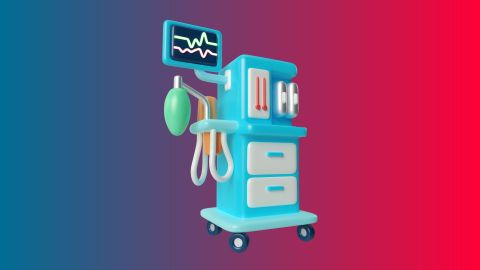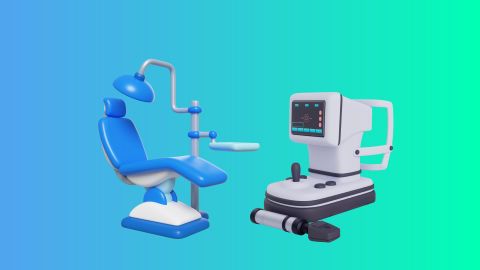Physiotherapy equipment plays a crucial role in restoring mobility, reducing pain, and supporting recovery after injury, surgery, or illness. These devices form the foundation of physical rehabilitation across clinical and home care settings. Understanding the various types, features, pricing, and maintenance requirements helps ensure effective treatment outcomes.
What is physiotherapy equipment?
A physiotherapy machine is a type of medical equipment designed to treat musculoskeletal conditions through therapeutic methods such as heat, cold, sound waves, and electrical stimulation. These devices help relieve pain, reduce inflammation, and promote tissue healing, supporting recovery after injury, surgery, or illness by restoring muscle and joint mobility. Common types of physiotherapy medical equipment include TENS machines, ultrasound devices, compression therapy units, and shockwave therapy machines, each offering distinct benefits for targeted rehabilitation.
Features of physiotherapy equipment
Physiotherapy equipment is engineered with features that enhance functionality, safety, and user comfort. While features vary by device type, common characteristics include:
- Adjustable intensity and frequency settings to suit individual therapy needs.
- Digital or touchscreen interfaces for easy control and operation.
- Lightweight and ergonomic designs suitable for portable use.
- In-built safety mechanisms to prevent overheating or electrical faults.
- Pre-set therapy programmes for different conditions.
- Compatibility with a wide range of accessories and attachments.
- Battery-powered or plug-in options for operational flexibility.
- Durable construction for long-term clinical use.
Types of physiotherapy equipment
There are several types of physiotherapy equipment, each serving distinct functions depending on the nature of treatment. These include:
- Electrotherapy devices: TENS, IFT, and EMS machines that help reduce pain and improve muscle stimulation.
- Ultrasound therapy units: Used for deep tissue healing and inflammation control.
- Laser therapy machines: Assist in pain relief and tissue regeneration.
- Shortwave diathermy machines: Provide heat therapy to deeper muscle layers.
- Traction equipment: Cervical and lumbar traction devices that help in spine alignment and disc relief.
- Exercise therapy tools: Resistance bands, balance trainers, and pulley systems for strengthening and mobility exercises.
- Combination therapy units: Devices that integrate electrotherapy and ultrasound therapy in one unit.
- Hot and cold therapy devices: Support muscle recovery and reduce inflammation.
Benefits of physiotherapy instruments
Physiotherapy instruments provide a wide array of benefits that support recovery and overall physical well-being. Some key advantages include:
- Non-invasive treatment options with minimal side effects.
- Effective pain management and inflammation reduction.
- Restoration of joint and muscle mobility.
- Accelerated recovery after surgeries or injuries.
- Prevention of physical disabilities through structured therapy.
- Improved circulation and tissue healing.
- Support for long-term physical maintenance and chronic care.
- Enhances quality of life through improved physical function.
If you are considering financial support for medical equipment, check your eligibility for a loan today.
How to choose the right physiotherapy equipment
Selecting the right physiotherapy equipment requires a careful evaluation of therapeutic goals, safety standards, and long-term usability.
- Identify your needs and seek expert advice
- Assess your condition: Understand the specific therapy or rehabilitation goal you want to address.
- Consult a physiotherapist: Get professional guidance on suitable equipment for your treatment plan.
- Evaluate equipment quality and safety
- Choose reliable brands: Invest in durable, well-reviewed equipment from trusted manufacturers.
- Check certifications: Ensure the product meets recognised standards such as CE, ISO, or FDA approval.
- Verify safety features: Look for non-slip surfaces, emergency shut-offs, and protective guards.
- Consider features and functionality
- User-friendly controls: Opt for machines with adjustable settings and intuitive interfaces.
- Portability and space efficiency: Select lightweight, compact designs if space or mobility is a concern.
- Review cost, warranty, and after-sales support
- Balance budget and value: Compare costs while considering warranty terms and customer support options.
- Plan for future requirements
- Ensure scalability: Choose equipment that can accommodate evolving therapeutic or clinic needs.
Physiotherapy machine price in India
The cost of physiotherapy equipment in India varies significantly depending on the machine type, features, and brand. Below is an indicative price table for commonly used equipment:
| S. No. | Physiotherapy Equipment | Minimum Price (₹) | Maximum Price (₹) |
| 1 | TENS Therapy Machine | ₹1,800 | ₹1,50,000 |
| 2 | Cervical/Lumbar Traction Kit | ₹1,350 | ₹2,500 |
| 3 | Cervical/Lumbar Traction Machine | ₹15,000 | ₹25,000 |
| 4 | Continuous Passive Motion (CPM) Machine | ₹40,000 | ₹2,00,000 |
| 5 | Shortwave Diathermy Therapy Machine | ₹21,000 | ₹8,10,000 |
| 6 | Muscle Stimulator Therapy Machine | ₹1,000 | ₹72,000 |
| 7 | Laser Therapy Equipment | ₹29,700 | ₹1,20,000 |
| 8 | Shockwave Physiotherapy Machine | ₹40,500 | ₹7,25,000 |
Prices may vary based on supplier, brand, technology, and bundled accessories. Always compare specifications before purchase.
Maintenance tips for physiotherapy equipment
Proper maintenance of physiotherapy equipment ensures accuracy, safety, and longer operational life. Regular cleaning, timely inspections, and correct storage are essential to keep devices in optimal condition.
- Cleaning and hygiene: Clean all surfaces, handles, and seats after every session using manufacturer-approved disinfectants. Pay special attention to joints and crevices where dirt may collect.
- Inspections and testing: Regularly examine cables, connectors, and safety components. Schedule periodic calibration for high-precision equipment to maintain accuracy.
- Storage and environment: Keep devices in clean, well-ventilated areas on stable surfaces, away from moisture and direct sunlight.
- Wear and tear management and operational practices: Replace worn or damaged parts immediately, follow operational guidelines from the user manual, and maintain detailed maintenance records for consistent equipment performance.
Conclusion
Physiotherapy equipment is integral to effective rehabilitation, offering targeted treatment and supporting patients on their journey to recovery. Whether for clinical use or home therapy, selecting the right equipment depends on therapy goals, device features, and maintenance feasibility.
To make your purchase more convenient, explore flexible medical equipment finance options that help you invest in advanced physiotherapy tools without financial strain. Check offers on medical equipment finance and hospital loans to upgrade your practice with advanced tools.




